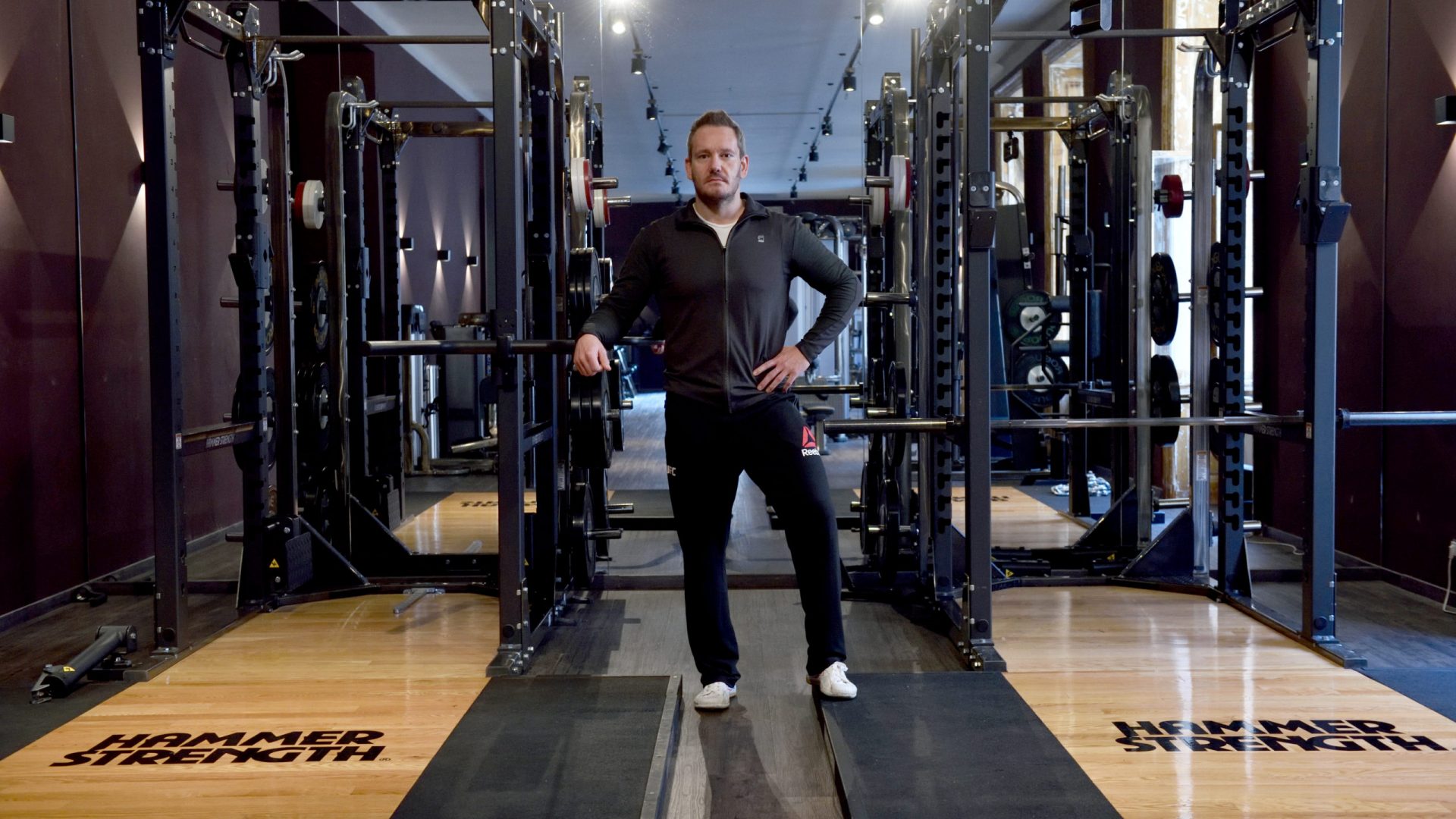Has gene doping already arrived in Austria? Or is it still a dream of the future? The daily newspaper "Die Presse" invited me to an interview on this topic on 26.11.2018. You can read it here.
1) How did you get into (strength) sports and what are your premises here?
I started early, when I was about 14 I went to a gym in Vienna for the first time with my brother. At 14 I just wanted to be there, I didn't even have a goal. A few years later, a physical performance thought developed out of it for me. so to be more precise, to get stronger. Aesthetic goals could never inspire me for long.
I started CrossFit 10 years ago and made this sport popular in Austria. In CrossFit, performance is definitely an important factor.
2) What is the appeal of body design?
When we talk about body sculpting, we are talking about bodybuilding, not weight training. Furthermore, we should then differentiate between the professional bodybuilder and the hobby athlete.
For most fitness enthusiasts who practice bodybuilding as a hobby, the aesthetic improvement of their figure is in the foreground, with the goal of visually standing out from the crowd. Today, it seems more important than ever to score points in your job and personal life with a healthy appearance. This can even make a difference in a job interview, as it signals a certain level of ambition. For many, however, it is simply important to cut a good figure on Saturday nights at the club. In the end, for many it's just about improving their status in society.
The professional bodybuilder also wants to show what he can create with discipline and diligence with his body. For some, this is the profession with which they earn money, as for others firefighter or doctor.
3) Doping is a topic that is not only present in elite sports, but especially in popular sports: When did you first encounter it or are/were you involved with it through clients/descriptions from friends/your own experience, etc.?
I would say that since the turn of the millennium, the popularity of doping has risen sharply. The role models in sports and cinema have changed, access to doping substances has become easier, and the Internet has slowly emerged.
Doping is enormously prevalent in popular sports. Access to doping substances is very easy and cheap. There are "dealers" in many gyms. They are mostly young amateur athletes who want to earn some extra money. The goods come mostly from underground laboratories from abroad. Of course, the online trade with these substances is also flourishing.
The ambition to win a medal is now comparable in amateur and professional sports. Amateur athletes who do not earn their money with it and still give everything to win a medal, for which there is not even prize money. Then the marathon or triathlon becomes an exaggeratedly serious goal to measure themselves against themselves. Doping agents are gladly taken here to help a little.
4) You offer endurance training, but also strength training, train/coach various top athletes, so you have insight into various sporting areas: (Where) Is doping an issue? And: What types of doping?
I have been coaching professionals from various sports for 10 years. Tennis, football, weightlifting, martial arts, and many more. Most people think of doping first of bodybuilding or weight training, which of course may be an issue there. What many don't know is that doping is present in almost every sport. From rhythmic gymnastics to biathlon. This year at the Olympic Games in Korea, there was a case in curling. Who would have suspected that or think of the case of tennis player Sharapova.
It becomes more understandable when you know that regeneration is the main reason for doping. In professional sports, it is often a matter of delivering performance several times in a row. Often there are only short recovery times between the individual competitions.
The pressure to perform on the part of the organizers, sponsors, press and also the fan community is often enormous. A professional athlete often has only a small window of time in which he can be successful and this often decides the financial future.
Not everyone can become a coach or commentator after their active career.
But doping is not limited to professional and amateur sports.
Managers turn to cocaine and Ritalin, students take amphetamines to get high for exams and to cope with the stress of learning. Even single mothers in the countryside take drugs to cope with everyday stress. All this is doping!
5) The former ZDF presenter Marcus Thomas has written a book in which he writes about his experience with weight training and also about a doping experiment. Quote: "The side effects were drastic. My whole back was full of pimples, I had sweats and didn't sleep through the night anymore. In addition, gynecomastia occurred, the mammary glands enlarged. Bodybuilders talk about 'bitch tits.' My body didn't know what to do with all the testosterone." Do you know similar stories?
Yes, of course, if you are professionally involved in this area, you will be confronted with it sooner or later. In various discount studios, doped athletes are often recognized in the locker room by the side effects they describe.
Many of these young athletes suppress or deliberately ignore the known side effects. Acne and gynecomastia are only the tip of the iceberg. Damage to the cardiovascular system or long-term hormonal imbalances are the consequences. The risk of a heart attack or stroke increases enormously. Especially in women, the physical changes are obvious, because nature did not plan it this way.
6) A comparatively new "trend" is gene doping. Is/was it an issue? If so, in which areas?
Actually, gene doping has been around for a long time. It is also via pharmacological routes with anabolic steroid hormones to interfere with our genes.
But gene doping is actually the introduction of DNA or RNA molecules into the organism. We are talking about a permanent change of the genetic material and this is not reversible.
In medicine, work on genes is used for therapeutic purposes. The goal is to cure genetic diseases, and this is still in its infancy. It stands to reason that this would also give rise to another branch, gene doping. But here the aim is to enhance performance.
Almost limitless increase in endurance, strength and regeneration ability without having to permanently take steroids, that sounds like a dream for many.
In Austria, gene doping is not yet an issue. It is too early for that.
The state of development is not far enough, the costs would still be too high (at least for mass sports) and the access to classical pharmacological agents, on the other hand, is easy, inexpensive and unfortunately enormously effective.
7) What is the "reputation" of gene doping? Is the appeal present to shape/dope oneself to the perfect athlete/body?
Gene doping is hardly discussed in the scene, the possibilities are very limited. There is a lack of access, specific knowledge and, finally, science is not yet far enough. Those who play with the idea, believe that gene doping is the "egg-laying willow sow" of performance optimization. A small intervention and you produce a lifetime more muscles or red blood cells. And the whole thing without side effects. Of course, this is a misconception.
Remember, anyone who takes classical pharmacological agents largely stops the effect when they are discontinued. This is not the case with gene doping; it is not reversible, and thus the production of the desired substance can no longer be stopped. The long-term consequences are not foreseeable.
8) Bodybuilding in particular is often in the media in connection with doping, be it steroids or gene doping, specifically myostatin blockers. What is your information on this?
These thoughts were derived from the birth of a child in Berlin with exactly this gene expression. At birth, the boy already had visibly pronounced muscles and, at the age of four, twice as much strength as children of the same age.
This was previously known only in cattle species such as the "White-Blue Belgian". The breed is considered a genetic wonder, with many health drawbacks.
On the basis of medical application, such a drug would certainly be useful to help people with muscle diseases.
9) In addition to indirect gene doping, direct (=targeted modification of the genome) is also a topic in medicine - albeit in connection with the desire to cure diseases such as cancer. But, according to the opinion: What is medically researched is quickly abused. Are those who want to dope always one step ahead of those who want to ban it?
Here it should be said, gene doping was already blacklisted by the International Doping Agency before it even became possible.
In the beginning, people who abuse it in sports are always one step ahead of the controlling authorities. But for every drug, a test has been developed to detect it. This will be no different with gene doping. It is also possible that new and complex types of doping can only be detected much later, but retroactively. What can happen then is that medals are disallowed years later. The doping athlete must always keep this risk in mind.
10) Like other types of doping, gene doping has/had negative consequences for the body, especially in the autoimmune area. Is it nevertheless accepted? Why?
In sports like bodybuilding, the quest for more and more muscles is almost endless. Many are not aware that our bodies, however, are not infinitely resilient. Imagine being able to pack another 10-20kg more muscle onto the already massive bodies of professional bodybuilders through gene doping. That's not unrealistic! But next they must then dope bones and tendon ligament apparatus, because these would break or travel under these new loads.
Any athlete who takes drugs on a long-term basis should be aware of the risks. Most of them take it to improve aesthetics or to increase performance. Depending on their personality type, some people will do anything to become a world champion in their sporting discipline. As in all areas where there is a lot of money and recognition at stake, cheating and even violence are sometimes used in sports to eliminate competition. In sports it is no different than in politics and economy, fairness is not always written in capital letters. Which definitely does not correspond to the Olympic idea.
11) One in two high-performance athletes would be willing to die within five years if taking a doping drug guaranteed them a gold medal at the Olympic Games. This was the result of a survey conducted by the US physician Bob Goldman in 1982. He repeated the survey at two-year intervals until 1995, and the results were always similar. Do you think athletes would still answer that way in 2018?
I am of the opinion that if you offer someone at this level the chance to win gold, but he or she has to take a doping drug that cannot be detected but limits life expectancy, many would agree. For us the motivation behind such thoughts is hardly comprehensible, but for other people successes of this kind have a completely different meaning. In countries like Russia, Olympic medalists are rewarded quite differently than in Austria, for example.
12) Are there things related to gene doping that I haven't addressed but that you think would still be important to mention?
No.











